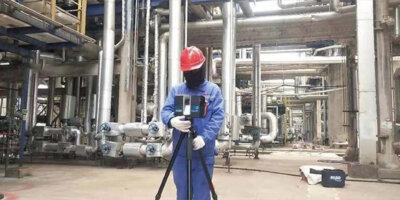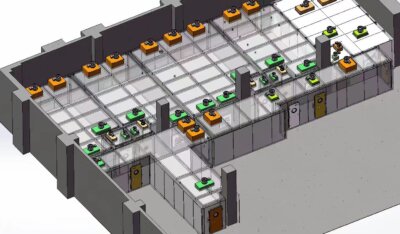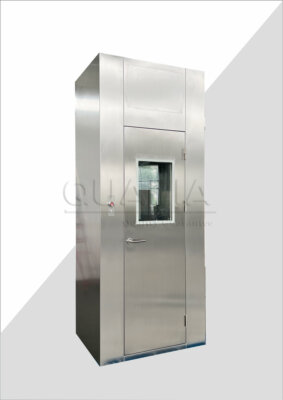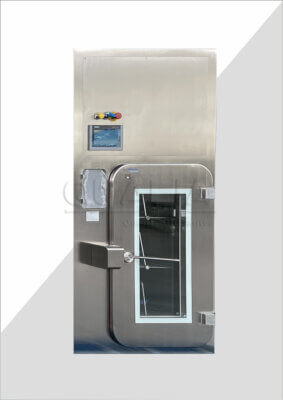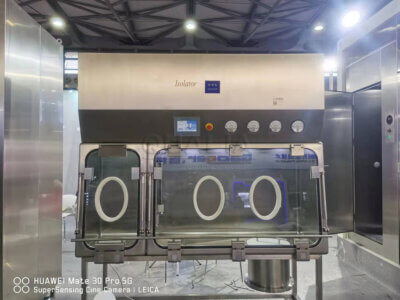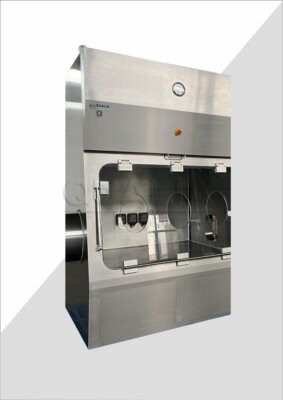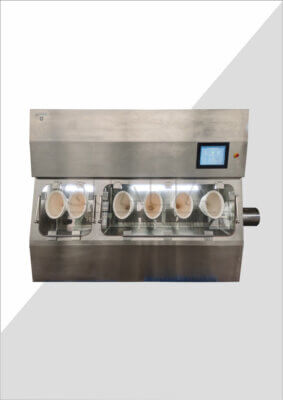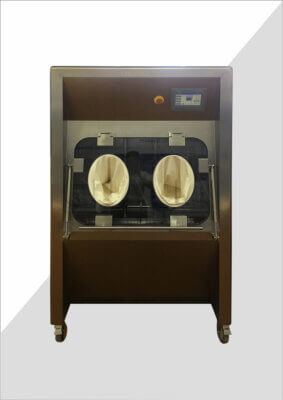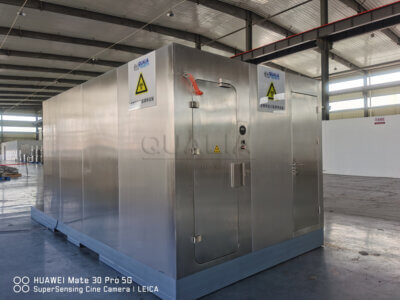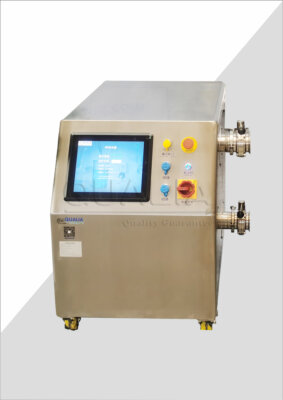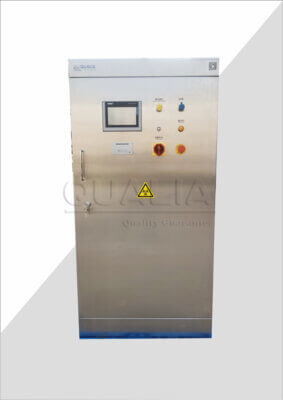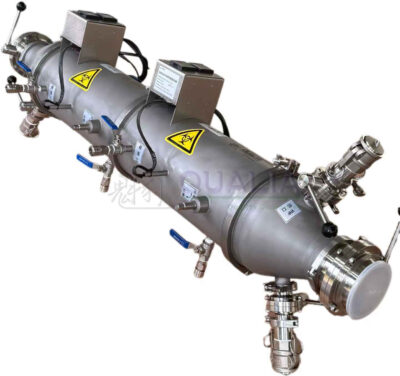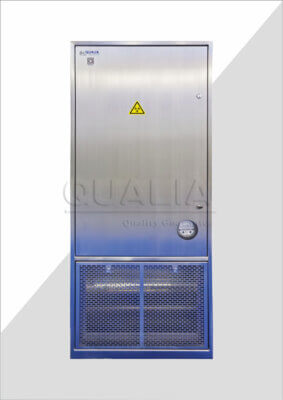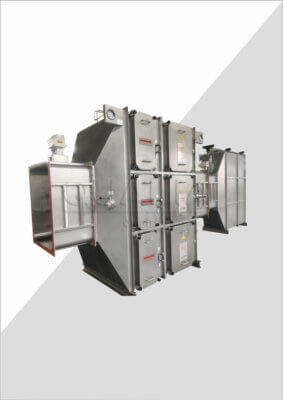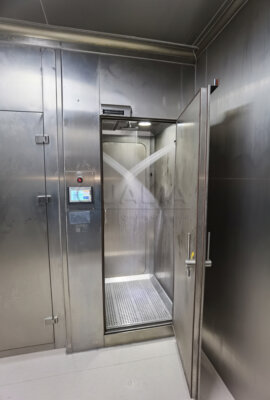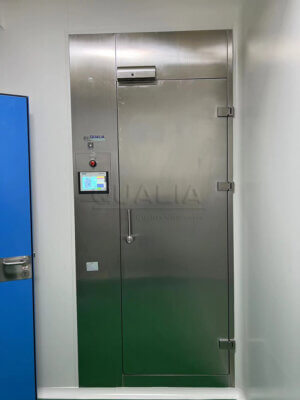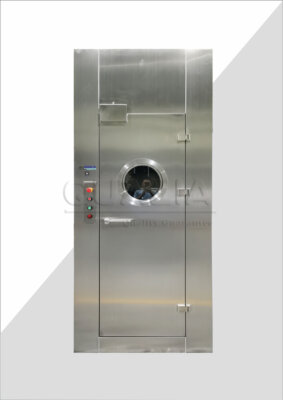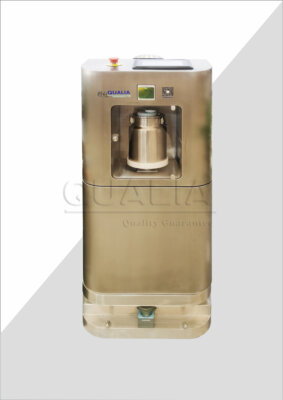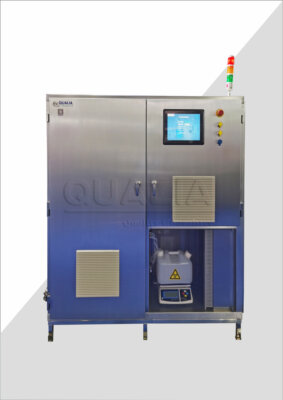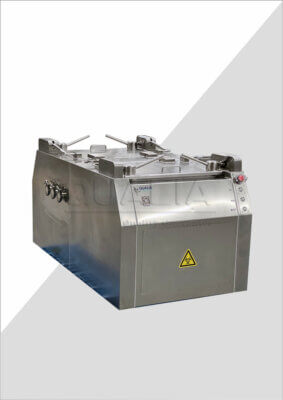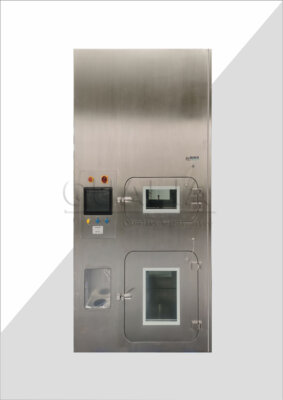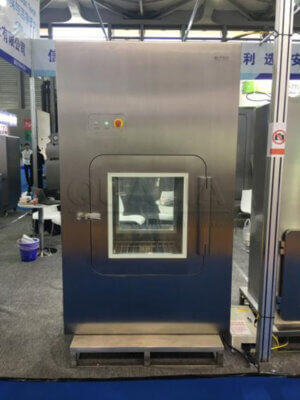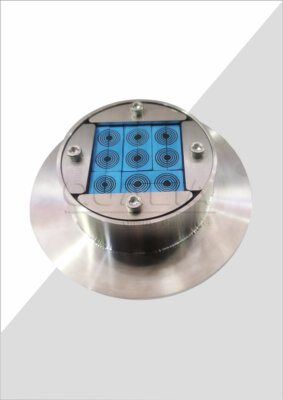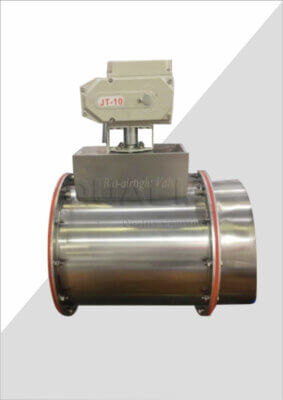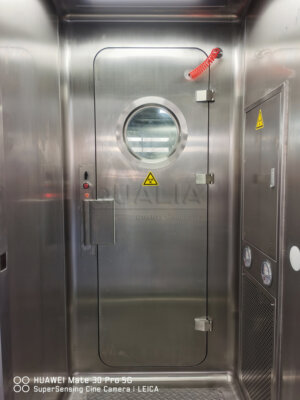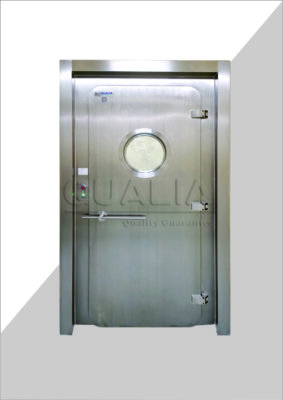In the rapidly evolving landscape of biomedical research and infectious disease control, the demand for advanced laboratory facilities has never been greater. Expandable modular BSL-3 laboratory systems have emerged as a cutting-edge solution to meet this growing need. These innovative systems offer unprecedented flexibility, scalability, and efficiency in establishing high-containment research environments. As we delve into the world of expandable BSL-3 labs, we'll explore how these modular systems are revolutionizing the way we approach biosafety and biocontainment.
The concept of expandable modular BSL-3 laboratory systems represents a significant leap forward in laboratory design and implementation. These systems combine the rigorous safety standards of Biosafety Level 3 (BSL-3) facilities with the adaptability of modular construction. This approach allows for rapid deployment, easy expansion, and seamless integration with existing infrastructure. From addressing global health crises to advancing cutting-edge research, these modular systems are proving to be invaluable assets in the scientific community.
As we transition into a deeper exploration of expandable modular BSL-3 laboratory systems, it's crucial to understand the fundamental principles that drive their design and functionality. These systems are not just about containment; they're about creating dynamic, responsive research environments that can adapt to evolving scientific needs and challenges. Let's examine the key features, benefits, and applications of these innovative laboratory solutions.
Expandable modular BSL-3 laboratory systems represent a paradigm shift in biocontainment facility design, offering unparalleled flexibility, rapid deployment capabilities, and adherence to the highest safety standards.
What are the key components of expandable modular BSL-3 laboratory systems?
At the heart of expandable modular BSL-3 laboratory systems lies a complex array of components, each meticulously designed to ensure safety, functionality, and adaptability. These systems are built upon a foundation of modular units that can be easily transported and assembled on-site, forming a cohesive and fully operational BSL-3 facility.
The core elements of these systems include specialized HVAC systems with HEPA filtration, airlocks, and pressure differentials to maintain containment. Advanced laboratory equipment, such as biosafety cabinets and autoclaves, are seamlessly integrated into the modular design. The structural components are engineered for durability and easy decontamination, often featuring smooth, non-porous surfaces and sealed seams.
Diving deeper, we find that the modularity extends beyond just the physical structure. These systems incorporate flexible utility connections, allowing for easy expansion and reconfiguration as research needs evolve. The electrical and plumbing systems are designed with redundancy in mind, ensuring uninterrupted operation even in challenging environments.
Expandable modular BSL-3 laboratory systems incorporate state-of-the-art containment technologies within a flexible, scalable framework, enabling rapid deployment and adaptation to diverse research requirements.
| Component | Function | Key Features |
|---|---|---|
| HVAC System | Airflow control and filtration | HEPA filtration, pressure differentials |
| Modular Units | Core structural components | Transportable, easily assembled |
| Airlocks | Maintain containment barriers | Double-door systems, interlocks |
| Laboratory Equipment | Research and safety apparatus | Biosafety cabinets, autoclaves |
| Utility Connections | Flexible service provision | Easily reconfigurable, redundant systems |
In conclusion, the key components of expandable modular BSL-3 laboratory systems work in harmony to create a safe, efficient, and adaptable research environment. This intricate balance of safety features, modular design, and cutting-edge technology forms the backbone of these innovative laboratory solutions.
How do expandable modular BSL-3 labs enhance research capabilities?
Expandable modular BSL-3 labs are revolutionizing the way researchers approach high-containment studies. These advanced facilities offer a level of flexibility and adaptability that traditional brick-and-mortar laboratories simply cannot match. By providing a rapidly deployable, fully-equipped BSL-3 environment, these modular systems enable researchers to respond quickly to emerging threats and pursue cutting-edge investigations with minimal delay.
One of the key advantages of these systems is their ability to scale up or down based on research needs. This scalability allows institutions to optimize their resources, expanding their capabilities when necessary without the long-term commitment of a permanent facility. Additionally, the modular nature of these labs facilitates the integration of new technologies and equipment as they become available, keeping research capabilities at the forefront of scientific advancement.
The enhanced research capabilities extend beyond just the physical space. QUALIA expandable modular BSL-3 labs often come equipped with advanced data management and communication systems, enabling seamless collaboration between on-site researchers and remote teams. This interconnectedness fosters a more dynamic and productive research environment, accelerating the pace of scientific discovery.
Expandable modular BSL-3 laboratory systems significantly enhance research capabilities by providing a flexible, rapidly deployable platform that can adapt to evolving scientific needs and facilitate cutting-edge investigations in high-containment environments.
| Research Enhancement | Description | Impact |
|---|---|---|
| Rapid Deployment | Quick setup of fully functional BSL-3 labs | Faster response to emerging threats |
| Scalability | Easy expansion or reduction of lab space | Optimized resource utilization |
| Technology Integration | Seamless incorporation of new equipment | Continuous advancement of research capabilities |
| Collaborative Features | Advanced communication systems | Enhanced teamwork and knowledge sharing |
In conclusion, expandable modular BSL-3 labs are not just an alternative to traditional laboratories; they represent a significant leap forward in research capabilities. By offering unprecedented flexibility, scalability, and technological integration, these systems are empowering scientists to push the boundaries of biomedical research and infectious disease control.
What safety features are incorporated into expandable modular BSL-3 systems?
Safety is paramount in any BSL-3 laboratory, and expandable modular systems are designed with this principle at their core. These facilities incorporate a comprehensive array of safety features that meet or exceed the stringent requirements for BSL-3 containment. The modular design, far from compromising safety, actually enhances it by allowing for the integration of the latest safety technologies and the ability to quickly update systems as standards evolve.
At the forefront of these safety features is the advanced HVAC system. These systems maintain negative air pressure within the containment areas, ensuring that potentially hazardous agents remain confined. HEPA filtration is employed for both supply and exhaust air, effectively trapping microscopic particles and preventing their release into the environment. Airlocks and interlocking doors create multiple containment barriers, further enhancing the safety envelope.
The Expandable modular BSL-3 laboratory systems also incorporate robust emergency systems. These include backup power generators, redundant HVAC components, and failsafe mechanisms that maintain containment even in the event of power failures or equipment malfunctions. Additionally, the modular design allows for the easy implementation of decontamination systems, such as vaporized hydrogen peroxide (VHP) distribution, ensuring thorough sterilization of the facility when required.
Expandable modular BSL-3 laboratory systems integrate advanced safety features that create multiple layers of protection, ensuring the highest levels of containment and worker safety while maintaining the flexibility inherent in modular design.
| Safety Feature | Function | Benefit |
|---|---|---|
| Advanced HVAC | Maintains negative pressure and filtration | Prevents release of hazardous agents |
| Airlocks | Creates containment barriers | Enhances isolation of work areas |
| Emergency Systems | Ensures continuous operation | Maintains safety during power outages |
| Decontamination Systems | Facilitates thorough sterilization | Enables safe maintenance and reconfiguration |
In conclusion, the safety features incorporated into expandable modular BSL-3 systems represent the cutting edge of biocontainment technology. These comprehensive safety measures, combined with the inherent flexibility of modular design, create a research environment that is both secure and adaptable to evolving safety standards and research needs.
How do expandable modular BSL-3 labs compare to traditional fixed facilities?
When comparing expandable modular BSL-3 labs to traditional fixed facilities, several key differences become apparent. The most striking contrast lies in the flexibility and scalability offered by modular systems. Unlike fixed facilities, which are constrained by their permanent structure, modular labs can be easily expanded, reconfigured, or even relocated to meet changing research demands or to respond to emerging threats in different locations.
Traditional fixed BSL-3 labs often require extensive construction time and significant upfront investment. In contrast, expandable modular systems can be deployed rapidly, sometimes in a matter of weeks rather than months or years. This speed of implementation can be crucial in responding to urgent research needs or public health emergencies. Moreover, the modular approach often results in lower initial costs and provides the flexibility to scale the facility as funding or research requirements change over time.
Another significant advantage of modular systems is their ability to integrate the latest technologies more easily. While upgrading a traditional fixed facility can be disruptive and costly, modular labs can be updated or have new modules added with minimal impact on ongoing research activities. This adaptability ensures that the lab remains at the forefront of scientific capability throughout its lifecycle.
Expandable modular BSL-3 laboratory systems offer superior flexibility, faster deployment, and easier upgradeability compared to traditional fixed facilities, while maintaining equivalent or superior safety standards and research capabilities.
| Aspect | Modular BSL-3 Labs | Traditional Fixed Facilities |
|---|---|---|
| Deployment Time | Weeks to months | Months to years |
| Scalability | Easily expandable | Limited by original design |
| Technology Integration | Readily upgradeable | Upgrades can be disruptive |
| Initial Cost | Often lower | Typically higher |
| Relocation | Possible | Not feasible |
In conclusion, while traditional fixed BSL-3 facilities have served the scientific community well, expandable modular systems offer a compelling alternative that addresses many of the limitations of conventional labs. The flexibility, rapid deployment capabilities, and ease of upgrading make modular BSL-3 labs an increasingly attractive option for institutions looking to enhance their high-containment research capabilities.
What are the logistical considerations for implementing expandable modular BSL-3 labs?
Implementing expandable modular BSL-3 labs requires careful consideration of various logistical factors. While these systems offer significant advantages in terms of flexibility and rapid deployment, their successful implementation depends on thorough planning and coordination. One of the primary considerations is site selection and preparation. Although modular labs can be set up in a variety of locations, the site must meet specific requirements for utilities, access, and environmental conditions.
Transportation and assembly of the modular units present another set of logistical challenges. These components are designed for easy transport, but careful planning is necessary to ensure safe and efficient delivery to the installation site. Specialized equipment and expertise are often required for the assembly process, which must be carried out with precision to maintain the integrity of the containment systems.
Regulatory compliance is a critical aspect of implementing modular BSL-3 labs. While these systems are designed to meet BSL-3 standards, obtaining necessary approvals and certifications can be a complex process that varies by jurisdiction. This may involve coordination with multiple regulatory bodies and might require additional site-specific modifications or documentation.
The implementation of expandable modular BSL-3 laboratory systems demands meticulous planning and coordination across various logistical aspects, from site preparation to regulatory compliance, to ensure a successful and compliant deployment.
| Logistical Consideration | Key Points | Challenges |
|---|---|---|
| Site Selection | Utility requirements, accessibility | Finding suitable locations |
| Transportation | Specialized shipping, route planning | Ensuring safe transit of components |
| Assembly | Expert installation, precision required | Coordinating skilled personnel |
| Regulatory Compliance | Approvals, certifications | Navigating varying regulations |
| Utility Connections | Power, water, data infrastructure | Ensuring adequate support systems |
In conclusion, while expandable modular BSL-3 labs offer numerous advantages, their implementation requires careful attention to a range of logistical considerations. Addressing these challenges effectively is crucial for realizing the full potential of these innovative laboratory systems and ensuring their successful operation in diverse research environments.
How do expandable modular BSL-3 labs contribute to global health initiatives?
Expandable modular BSL-3 labs play a pivotal role in advancing global health initiatives by providing rapid, flexible, and high-containment research capabilities in diverse locations around the world. These systems are particularly valuable in regions where permanent BSL-3 facilities are scarce or non-existent, enabling crucial research and diagnostic work in areas most affected by emerging infectious diseases.
One of the key contributions of these modular labs is their ability to be quickly deployed in response to disease outbreaks or other public health emergencies. This rapid response capability allows researchers and health professionals to conduct on-site investigations, perform diagnostics, and develop interventions in real-time, significantly enhancing the global community's ability to contain and combat infectious diseases.
Furthermore, expandable modular BSL-3 labs facilitate international collaboration in research and public health efforts. By providing standardized, high-quality research environments in diverse locations, these systems enable scientists from different countries to work together more effectively, sharing knowledge and resources to address global health challenges collectively.
Expandable modular BSL-3 laboratory systems are instrumental in enhancing global health initiatives by providing rapid deployment capabilities, enabling research in underserved areas, and fostering international scientific collaboration in the fight against infectious diseases.
| Contribution | Impact | Example |
|---|---|---|
| Rapid Response | Quick setup of research facilities during outbreaks | Ebola virus research in West Africa |
| Capacity Building | Enhancing research capabilities in developing regions | Establishing BSL-3 labs in Southeast Asia |
| Standardization | Consistent research environments across locations | Global influenza surveillance network |
| Collaborative Research | Facilitating international scientific partnerships | Multi-country studies on emerging pathogens |
In conclusion, expandable modular BSL-3 labs are not just technological innovations; they are powerful tools in the global fight against infectious diseases. By providing flexible, high-containment research capabilities where they are most needed, these systems are helping to bridge gaps in global health infrastructure and accelerate scientific progress in critical areas of public health.
What future developments can we expect in expandable modular BSL-3 laboratory technology?
The field of expandable modular BSL-3 laboratory technology is poised for exciting advancements in the coming years. As research needs evolve and new challenges emerge, we can expect these systems to become even more sophisticated, efficient, and adaptable. One area of potential development is in the integration of artificial intelligence and machine learning technologies. These could be used to optimize laboratory operations, predict maintenance needs, and even assist in data analysis and research protocols.
Another promising direction is the development of even more compact and energy-efficient designs. Future modular labs may incorporate advanced materials and construction techniques that reduce weight and improve insulation, making them easier to transport and more sustainable to operate. Additionally, we might see advancements in renewable energy integration, allowing these labs to operate more independently in remote or resource-limited settings.
Advances in containment technology are also likely to shape the future of modular BSL-3 labs. This could include the development of new filtration systems, improved decontamination methods, and enhanced personal protective equipment integrated directly into the laboratory design. Such innovations would further improve safety and expand the range of research that can be conducted in these facilities.
The future of expandable modular BSL-3 laboratory technology is likely to be characterized by increased automation, enhanced sustainability, and advanced containment technologies, pushing the boundaries of what's possible in mobile high-containment research environments.
| Future Development | Potential Impact | Timeline |
|---|---|---|
| AI Integration | Improved efficiency and data analysis | 3-5 years |
| Advanced Materials | Lighter, more energy-efficient labs | 2-4 years |
| Renewable Energy Systems | Greater operational independence | 3-6 years |
| Next-Gen Containment Tech | Enhanced safety and research capabilities | 5-7 years |
In conclusion, the future of expandable modular BSL-3 laboratory technology looks bright and full of potential. As these systems continue to evolve, they will play an increasingly crucial role in advancing scientific research, responding to global health challenges, and pushing the boundaries of what's possible in high-containment laboratory environments.
Conclusion
Expandable modular BSL-3 laboratory systems represent a significant leap forward in the field of high-containment research facilities. These innovative systems offer a unique combination of flexibility, rapid deployment capabilities, and advanced safety features that make them invaluable assets in the global scientific community. As we've explored throughout this article, the advantages of modular BSL-3 labs extend far beyond their physical adaptability.
From enhancing research capabilities and incorporating cutting-edge safety features to contributing to global health initiatives, these systems are reshaping how we approach high-containment research and respond to emerging infectious diseases. The ability to quickly establish standardized, high-quality research environments in diverse locations around the world is proving crucial in our collective efforts to address pressing public health challenges.
Looking to the future, we can expect continued advancements in modular BSL-3 technology, with innovations in areas such as AI integration, sustainability, and containment techniques. These developments will further enhance the capabilities and efficiency of these systems, cementing their role as essential tools in scientific research and global health security.
As the world continues to face complex health challenges, expandable modular BSL-3 laboratory systems stand as a testament to human ingenuity and adaptability. By providing flexible, safe, and efficient research environments, these systems are not just facilitating scientific progress – they are helping to build a more resilient and responsive global health infrastructure. The ongoing evolution of this technology promises to open new frontiers in biomedical research and infectious disease control, contributing significantly to the advancement of science and the protection of public health worldwide.
External Resources
FEASIBILITY STUDY OF EXPANDABLE MOBILE BSL-3 LABORATORY (EMLAB) – This paper discusses the feasibility and design considerations of an Expandable Mobile BSL-3 Laboratory (EMLAB), focusing on its transportability, expandable internal volume, and compliance with BSL-3 and ISO cleanroom standards.
Modular BSL Laboratories | BSL 3 Laboratories – Germfree – This resource provides information on modular BSL laboratories, including BSL-3 labs, which are off-site built, contain all HVAC/MEP requirements, and can be integrated with existing laboratories. It highlights features such as biocontainment, process-driven HVAC design, and relocatable modules.
Mobile & Modular Laboratories – Biomedical Solutions, Inc. (BSI) – This page describes mobile and modular biocontainment laboratories designed for fast on-site diagnostic work and maintaining quarantine zones during disease outbreaks. It includes details on modular laboratory construction, self-contained HVAC systems, and high containment filtration systems.
Einstein BSL3 Laboratory Renovation to Advance Biomedical Research – Although not specifically about expandable modular labs, this project details the renovation of existing BSL-3 laboratory space to expand and improve facilities for RNA virus research, including modernization of building systems and equipment.
Mobile Biosafety Level 3 (MBSL-3) Laboratory – This section within the EMLAB feasibility study discusses a mobile BSL-3 laboratory deployed in Sierra Leone, highlighting its structure, functionality, and the ability to be transported by air, land, or sea.
Modular Biocontainment Lab Layouts – Germfree – This resource explores the standard and custom layouts of modular BSL laboratories, including room classifications, mechanical and electrical specifications, and the integration of necessary laboratory equipment.
Related Contents:
- Customizable BSL-3 Labs: Tailored Modular Designs
- Portable BSL-3 Labs: Flexible Containment Options
- Compact BSL-4 Labs: Innovative Design Trends
- Emergency Response: Mobile BSL Labs in Action
- Modular BSL-3/4 Labs: Rapid Deployment Solutions
- Modular BSL-3 Labs: Flexible Solutions for High-Security Research
- Turnkey BSL-3 Labs: Complete Modular Solutions
- Installing Modular BSL-3 Labs: Expert Guide
- Modular BSL-3 Labs: Rapid Construction Solutions


